As promised, I am writing about a species I very often bring up in circles amongst other bonsai enthusiasts. I may bring them up too often sometimes but considering that the winged elm, Ulmus alata, is my favorite species for bonsai, I just can’t help myself. A lot of people that stop by the nursery will ask what the best tree for a beginner is, and I usually have a few straight forward answers. For a true beginner that expects the classic look I will recommend the green mound juniper, juniperus procumbens, and for the people wanting a good native tree I recommend the bald cypress, taxodium distitchum. There are times when someone says the magic words “But, what species do you like the most?” and I always respond with winged elm 100%.
It’s a no brainer for me as to why I enjoy this species so much. Let me fill you in on why I believe so dearly in these little “throw away” elms. For one, it’s readily available just like the bald cypress is in my range. So It’s easy to find a colony of them in a local wood line that takes almost no effort to walk to. Where there is this a hand full of them found growing, they have a tendency to be spread out over many square miles in heavily wooded areas. Another reason I love these tree so much is part of why I even got into growing stock into bonsai. It is that they are first and foremost an elm. Elms are sometimes over looked in favor of more popular species such as junipers, pines, maples, hornbeams, etc. Elms are probably on the bottom of the list of preferred species for a few reasons they really can’t help.
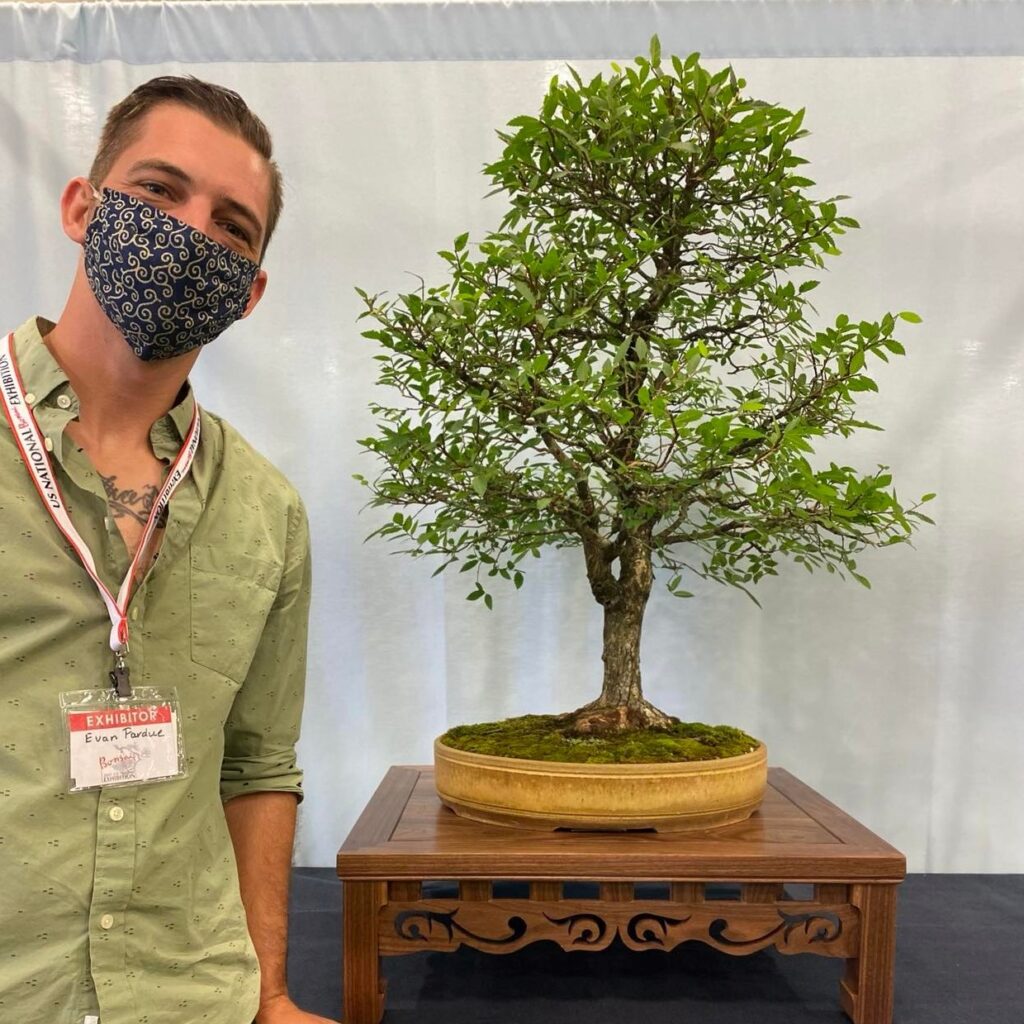
There are several pros and cons to elms but I think the winged elm gracefully overcomes the worse qualities.
Pros of elms for bonsai:
- Alternating buds that give them an interesting growth pattern for cut and grow styles
- Grows very fast given plenty of space to root fresh new roots and really stretch their “legs”
- Nice leaf shape with good color and textures
- Depending on the variety, the bark can be from rough and platted to soft and elegant
- Most species of elm have a high Code-X, or ability to heal medium to large wounds
- One of the best species to learn how to repot and learn good root work practices
- Not a lot of pests and easy to recover from an attack or disease
- Works in almost any style such as classic Japanese broom to clumpy tortoise back to full cascade styles
- This list could go on and on but these are highlights
Cons of elms for bonsai:
- Some species of elm have large leaves that are a little tricky to reduce
- The heart wood is punky and large wounds take a long time to completely heal
- Collecting elms in nature can be tricky especially if the area is hilly or rocky
- Another add on to collecting them from nature is that they’re trunks are predominantly straight and lack taper
- Nebari takes time to build and can have large gaps (this can be fixed with grafts)
- Wire scarring is much more obvious on younger developing branches
- It’s hard for me to think of more but these stand out to me as common issues I run into with elms
So what does the winged elms have over others varieties such as Chinese elms or zelkova? Their branches have “wings” that add more visual interest, their leaf reduces very well, and they build dense, twiggy branch structure with little effort. Another thing I’ve found with winged elm is that they are much more draught tolerant than their relatives, where as the Chinese elm will drop nearly all its leaves if allowed to dry too much.
With the abundance of winged elm in our range I’ve been able to do a lot of experimenting with them. I have a good handful in my own collection and I’ve found I enjoy two particular styles: Tall informal broom styles and short fat sumo styles.
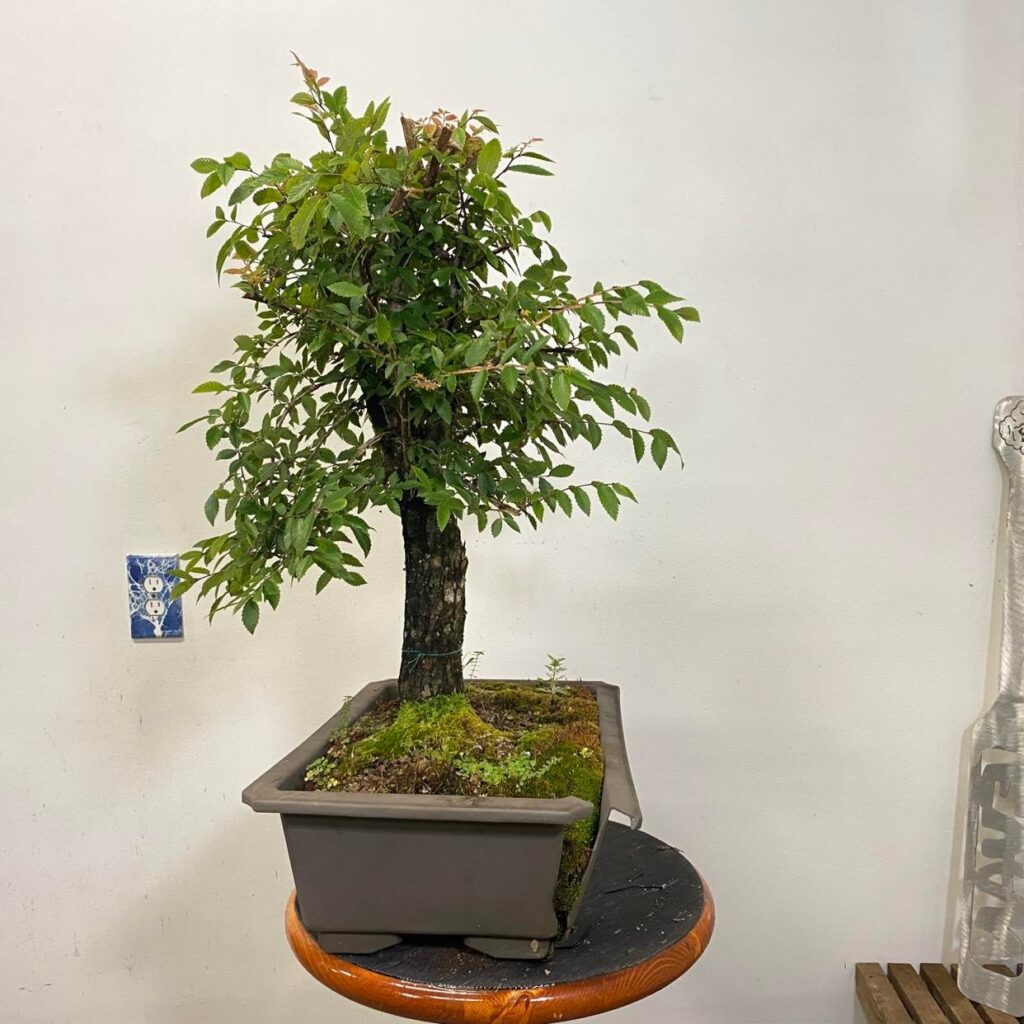
An example of a future tall and elegant broom style tree. The gentle curves in the trunk make way for setting up the viewer for a pleasing line up to the apex. Just needs a clean out and to establish the main branching.
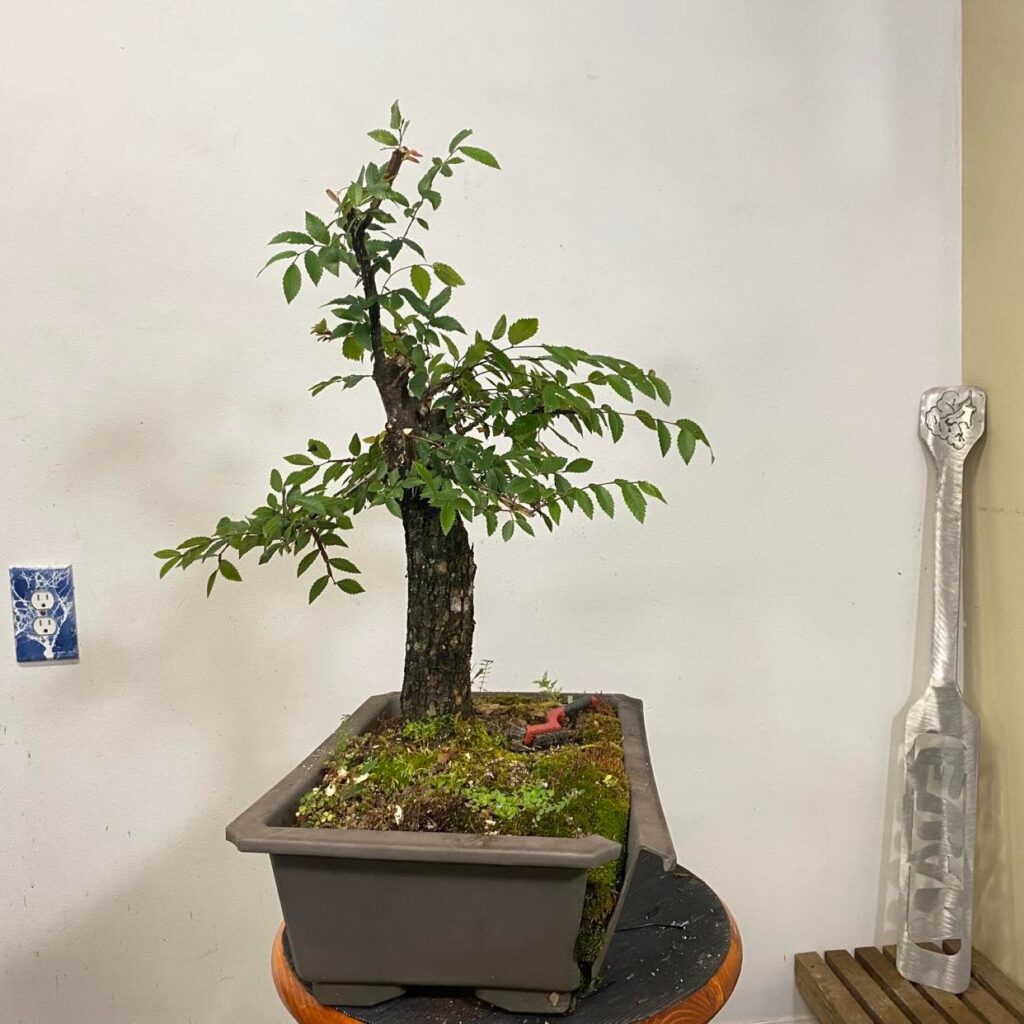
This tree will take a good amount of time to blow out the main branches for the properly proportioned sizes. It won’t take a life time but building this tree can take around ten years to get the best results.
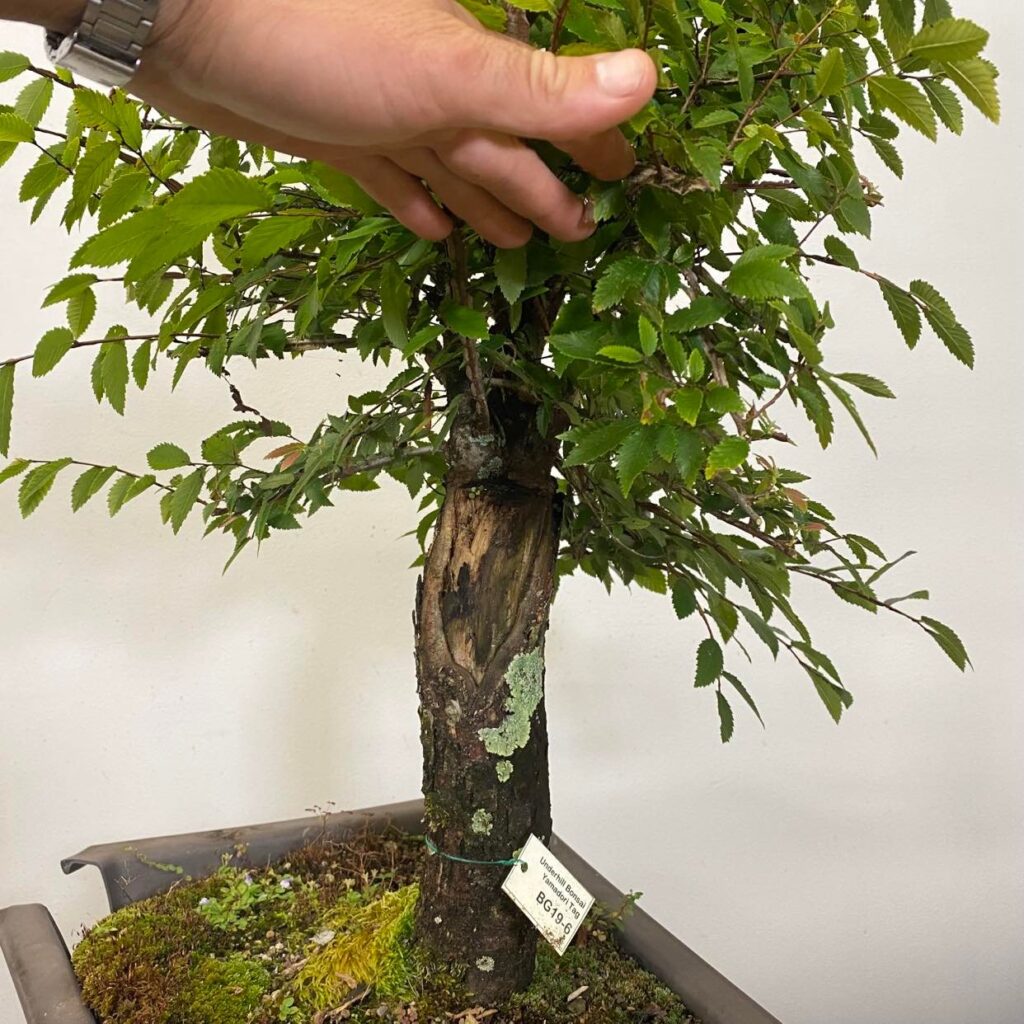
Also, there is a decent sized wound on this tree. Allowing the tree to grow freely will heal this wound in 3-5 years and then branches can be scion grafted on the scar’s location to further hide it. This tree will be developed using the good old cut and grow style. For example, let a branch grow for size and then cut it back to a good directional change and let the next set of branches grow. Repeat the process for taper. Also allowing branches to blow out in a long period of time with the approach will heal that wound.
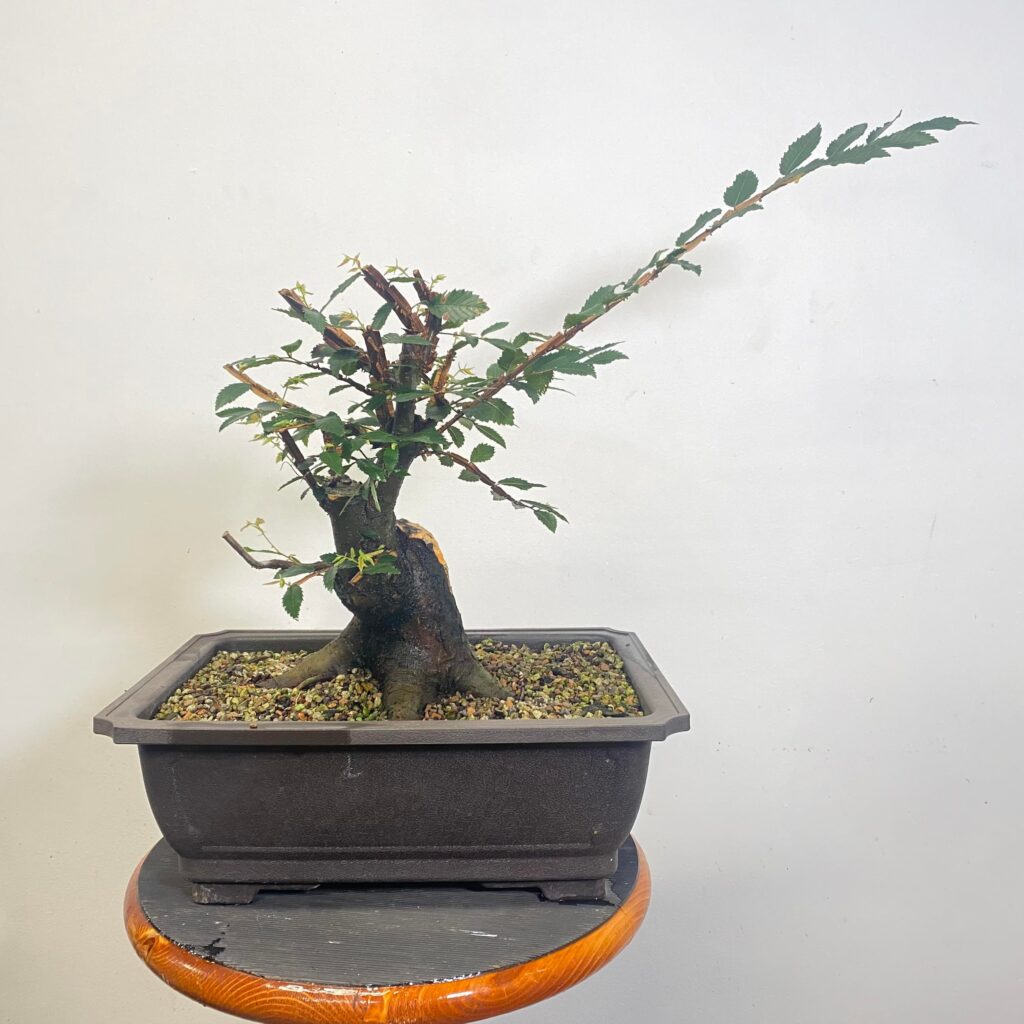
This is one of my many sumo trees I’m developing with winged elm. Why? Because I gotta.
The real reason is because winged elm has a feminine quality when they are tall and slender but when you start compressing them down they take on gnarly masculine qualities. As the bark develops on older winged elms they become plated and rough. The branches will be allowed to grow out extra thick for that kind of big arms on a comically small cartoon character look. I’m also imagining this tree much more developed down the road with super dense branching. There is a pretty large wound on the backside of this tree as well, which will take much longer to heal. I’ll be applying wound care paste to this site and checking for punky wood often. In the first sign of soft heart wood I will be removing it and replacing it with plumbers epoxy. If there isn’t a hard surface for the cambium to roll over then the wood will began to push under the rotted wood and never truly heal correctly.
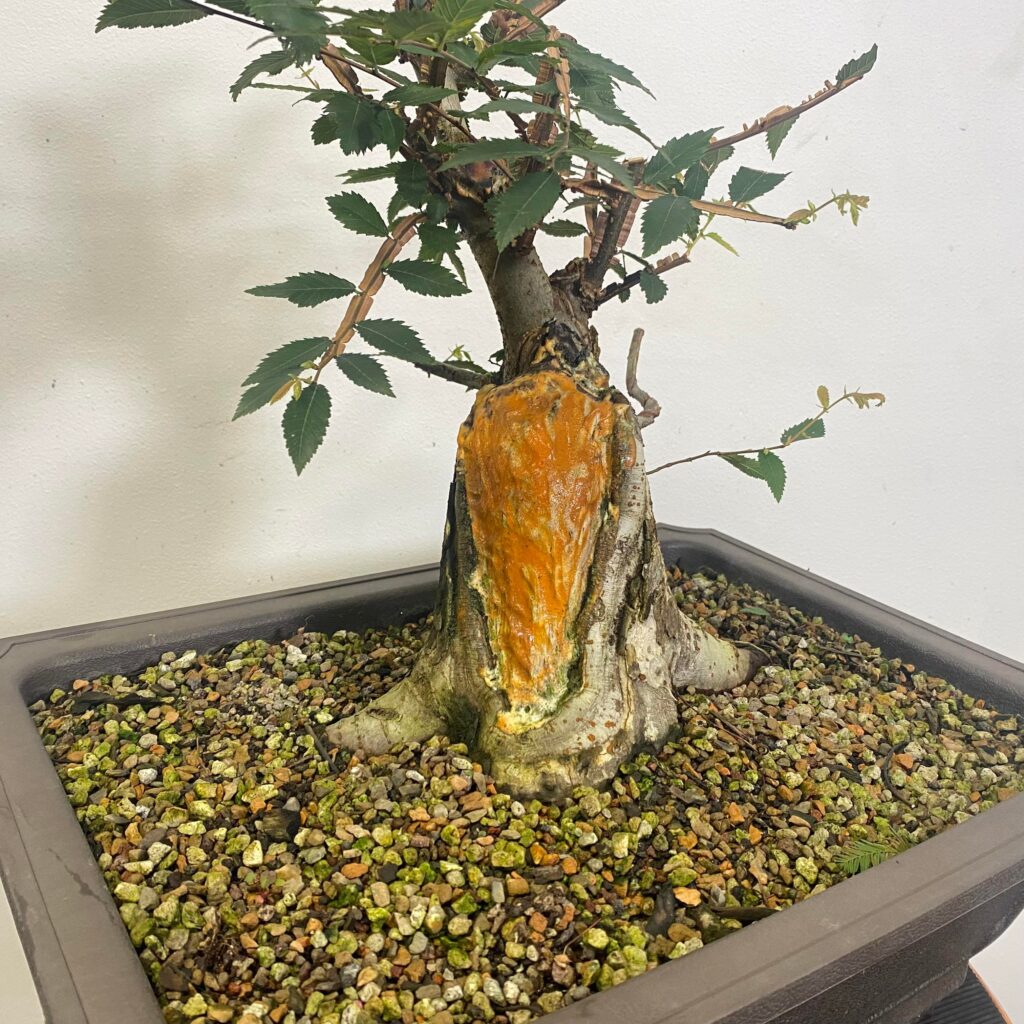
That’ll be it for today as far as winged elms. I will be periodically writing about the updates on these trees and other elms I’m developing in later posts. Just you wait!
-Evan
